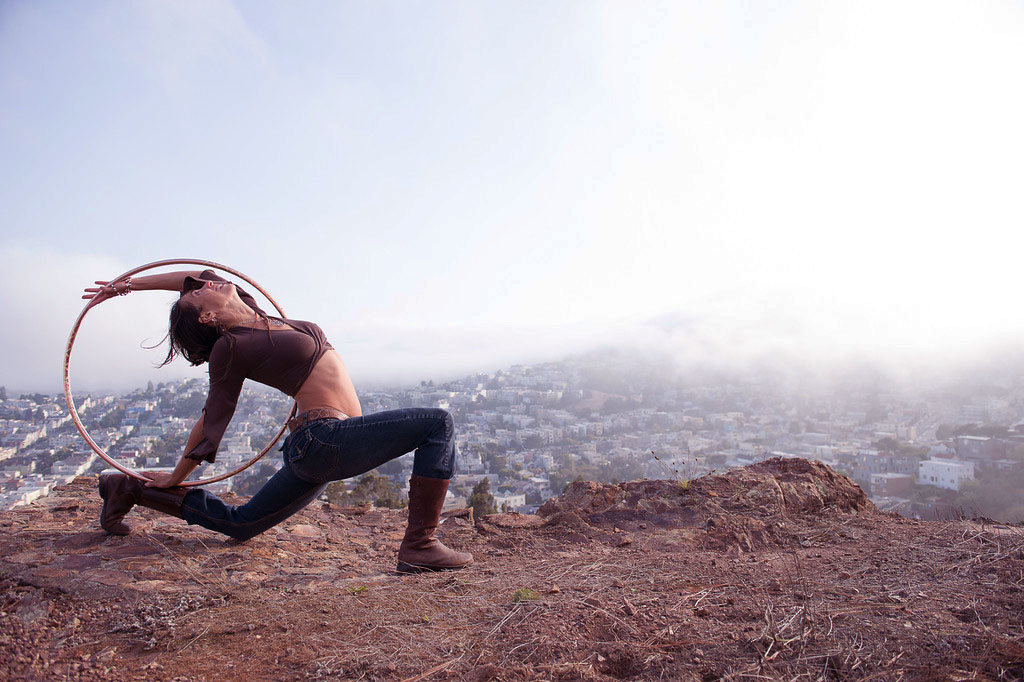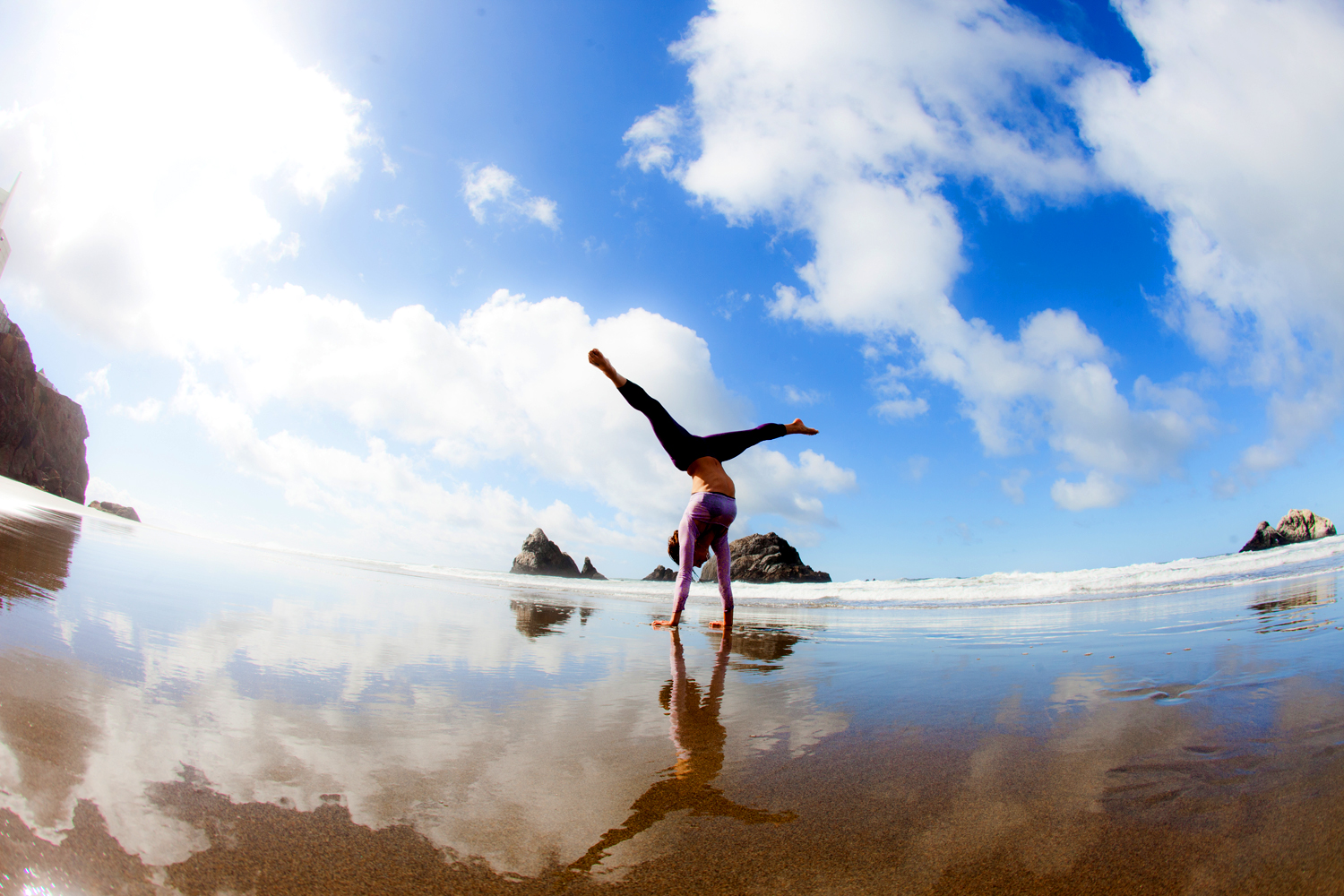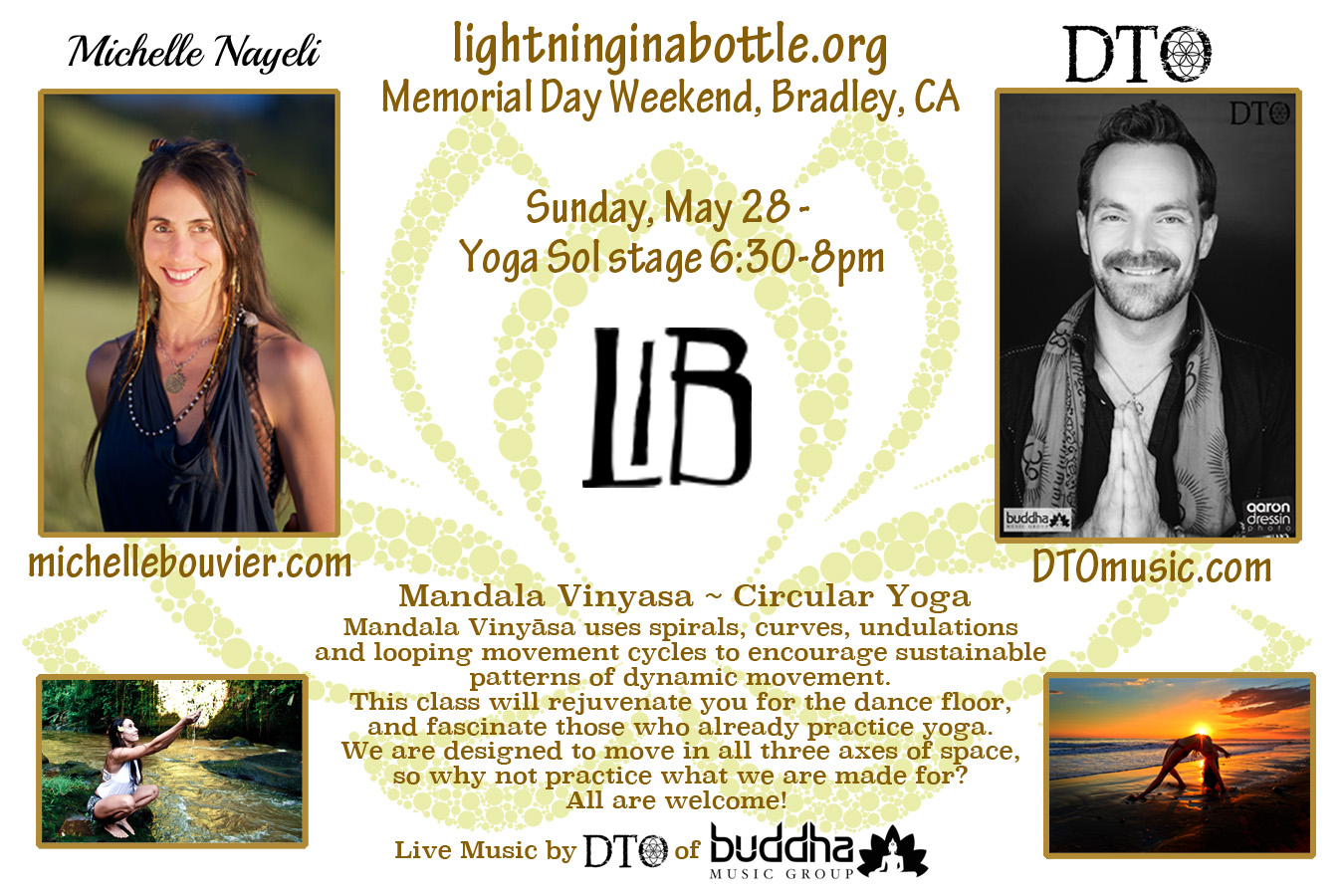
5Q Interview @MichelleNayeli
I will be performing at LIB for Michelle’s Hoop Vinyasa class on Sunday. We are excited to bring you the gift of healing and uplifting sound and movement that has given all of us beautiful, rewarding experiences. I had the opportunity to talk to Michelle about her journey, and how yoga and hooping became such an important element in her life cycle.
1.) Tell me about your personal journey with yoga and hooping. Why are they important to you?
Yoga found me when I was in high school, at a time when I was struggling with issues of self-worth and the expected friction of growing up pushing boundaries. The first yoga classes I took were late at night, by candlelight, and were welcome respite from long commutes to a college prep school and strict rules at home. The quiet and relaxation were balm to my growing spirit. It was years later that I realized those classes were a divine intervention that may have saved my life and kept me from depression altering the course of my life.
I was intrigued, and sought out classes in college, and in a local studio (I only found one at the time!), that opened my experience to more challenging practices, both physically and mentally. In 1997 I met Tim Miller and took my first Ashtanga Vinyāsa class, which was the beginning of a seven-year dedication and apprenticeship to the Ashtanga form, in a very special community and place that Tim had cultivated over decades. It was this period that transformed me the most, and where I made a dedication that yoga was to always be a part of my life.
Life changes, and so does practice. In a nutshell, injuries from car accidents brought me from a daily Ashtanga practice into a deep relationship with Anusara Yoga, yoga therapeutics, and a deep fascination with anatomy. Along the way I began to experience firsthand the effects of (physical and emotional) trauma on the nervous system, and started to practice more restorative yoga, meditation, and somatics as part of my journey. Currently, I believe yoga is a state of being that we reach through a variety of paths and practices… āsana, prānāyāma and meditation are well-trodden paths, but dance is also yoga… in fact the roots of physical yoga practice come out of spontaneous, ecstatic dance! (That’s another conversation, and happy to send those interested down the rich paths to these histories.)

In the flow on the mountains
In 2007 I first began practicing with Shiva Rea, who has become my main teacher, friend, and guide, and who transmits embodied yoga vinyāsa practice the way I have come to love and believe in and share.
Hooping came into my life in 2005, and quickly became a daily practice. Hooping, for me, transforms emotional energy faster and more reliably than any other practice or training I have ever spent significant time with. Hoopdance is yoga for me now; the combination of rhythmic entrainment, circular and organic movement, a spirit of playfulness, and direct access to the flow state is so far my favorite recipe to reach the state of yoga- of presence, trust and connection to self and to something greater.
All of this path has inspired my mission in this life to help people feel more free in their bodies and to get as many people dancing as possible!
2.) When did you first begin teaching yoga? What made you transition into a leadership position?
I began teaching yoga in 2000, while I was also working as a field ecologist. The truth is I didn’t consider teaching as a profession at all! I thought only Tim Miller taught yoga full-time, at the time. This was before yoga hit a wave of popularity and interest in the mainstream, and I was on a trajectory to be a scientist and continue down the ecological path. I remember vividly a personal ritual in which I told the Universe that I wouldn’t choose yoga as my profession, but if the Universe chose me, I would do it. It took me ten years to realize I was actually teaching full-time, and to accept it as my path!
3.) What makes your classes unique?
Every type of class I teach is influenced by Prāna Vinyāsa sequencing and rhythmic breath-based movement. I honor the truth that nothing in the Universe is static, that beneath everything there is a pulse, a flow, a vibration, whether it leads a physical movement or presents itself as the waves of the breath. I honor the truth that nothing in our physical structure is straight, flat, parallel, or in one plane… and probably not even symmetrical, either.
As we know, human knowledge is ever-evolving, and the more we look into anatomy, physiology and biomechanics, the more we see patterns of interconnection, flow, curves, spirals, raveling and unraveling. I no longer believe in teaching strict alignment, in the way that sends students a message of fitting a ‘perfect’ pose from the perspective of outside form. We all have stages to our practice, and for beginners, we need to start this way, but after a while, the embodiment comes from an intimacy with yourself. The truth is that there is incredible variation in the human structure, and to try to put all students into one expression of a pose is more likely hindering the flow of life than enhancing it. I am passionate about finding what works for each person, and specialize in working one-on-one, really taking time with people if they need it in class, or staying after to address their particular concerns or questions. Lastly, I believe the greatest gift yoga has for us in the 21st century is in self-care and rejuvenation, and that the only way to transform -physical, emotional, mental, spiritual- is through the gateway of the nervous system. The ways I feel called to guide pathways of transformation are through rhythmic entrainment of breath + movement, deep relaxation and meditative practices… where I believe we are able to cultivate our greatest resiliency of all it means to be human.

In the flow on the beach
4.) How does music benefit your guidance in a yoga class?
Music is so important to me! Creating a sonic landscape is one of the first ways people are invited to arrive to their practice and to themselves. Personally, I am not a fan of fast music in a yoga class almost ever, but in a dance class the tempo keeps you going, and helps propel you into the state of flow. Teaching vinyāsa, to me, is still about slowing down from the fast-pace of life (at least now teaching in San Francisco!), and I prefer steady, flowing, longer tracks that uplift and encourage a steady presence to the flow of movement and breath. (It’s certainly possible to cultivate strength and feel like you’ve got a workout in moving slowly and continuously, sometimes surprisingly so!) In more restorative classes I tend toward droning and natural sounds, to cultivate a space of greater surrender. Live music is really the ultimate experience, and I love being able to work with DJs and musicians who are also movers//dancers//yogis who can co-create a sonic landscape in the moment.
5.) Tell me about your next event and where we can follow you online.
I’m taking time to develop content for my work in circular-based therapeutic vinyāsa (stay tuned for more Mandala Vinyāsa), and plan the next EmBody Retreat, but do have a few festival workshops coming up! I’ll be teaching Hoop Vinyāsa at LIB Memorial Day weekend 2017, with live music by DTO!) and Florida Flow Fest in preparation for the launch of my online Hoop Vinyāsa course on Shiva Rea’s new (and honestly epic!) online platform, Yoga Alchemy. The videos will also be available for download anytime after the initial week-long series. have been famously shy in sharing online videos, but have been asked by so many people that I am now promising (you can be my witness!) to create more online practices to share on my YouTube channel in the coming months.
You can follow me on Instagram @michellenayeli, on FaceBook @
Attention Yogis and Yoginis: Are you interested in doing a 5Q Interview? Fill out your unique responses here.

